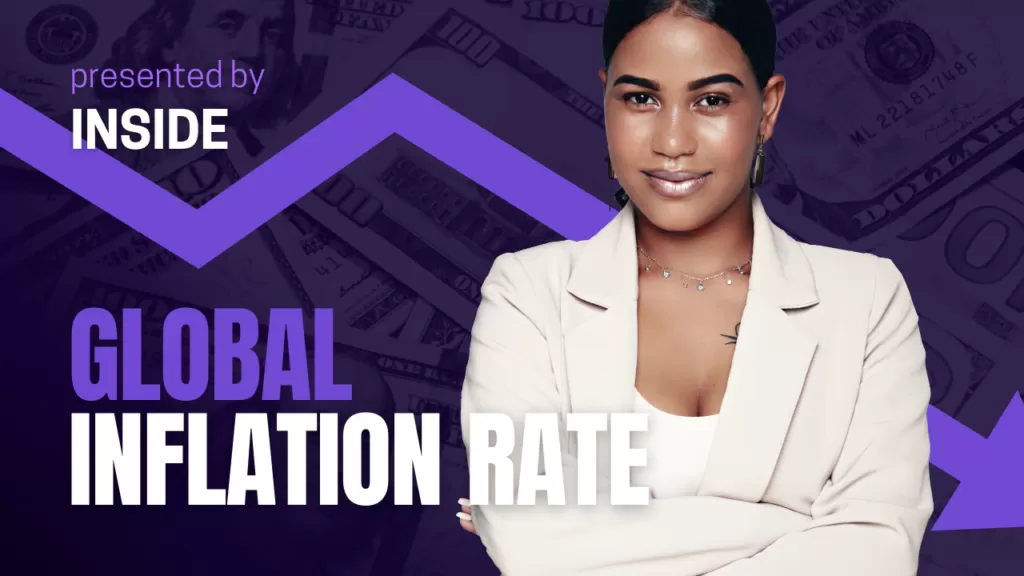Breaking: US CPI inflation data falls to 4% in May vs. 4.1% anticipated
Breaking: US CPI inflation data falls to 4% in May vs. 4.1% anticipated

Inflation in the US, as measured by the change in the Consumer Price Index (CPI), declined to 4% on a yearly basis in May from 4.9% in April, the US Bureau of Labor Statistics (BLS) reported on Tuesday. This reading came in slightly below the market expectation of 4.1%.
Further details of the publication revealed that the Core CPI inflation, which excludes volatile food and energy prices, edged lower to 5.3% from 5.5% as expected.
On a monthly basis, the CPI and the Core CPI rose 0.1% and 0.4%, respectively.
“The index for shelter was the largest contributor to the monthly all items increase, followed by an increase in the index for used cars and trucks,” the BLS noted in the press release. “The food index increased 0.2% in May after being unchanged in the previous 2 months.”
Market reaction
With the immediate market reaction, the US Dollar (USD) came under renewed selling pressure. As of writing, the US Dollar Index was down 0.5% on the day at 103.10.
The benchmark 10-year US Treasury bond yield also turned south and fell below 3.7%. According to the CME Group FedWatch Tool, markets are currently fully pricing a no change in the Fed interest rate on Wednesday, compared to 75% probability earlier in the day.
Commenting on the market implications of US inflation data, “I expect the US Dollar to edge lower, and for Gold and stocks to rally as time passes, there is no indication of a last-minute decision to raise rates,” said FXStreet Analyst Yohay Elam. “A tweet from “Fed insider” Nick Timiraos regarding the data is unlikely to include such a hint. Under these conditions, markets will likely remain calm and wait for the dot plot and Fed Chair Jerome Powell. There is no reason to panic – at least not yet.”
The highly-anticipated Consumer Price Index (CPI) inflation data for May will be published by the US Bureau of Labor Statistics (BLS) on June 13 at 12:30 GMT.
The United States Dollar (USD) has been trading quite choppy in the lead-up to the crucial US inflation report, following a mixed May Nonfarm Payrolls report. The recent series of discouraging US economic data have underpinned expectations of a US Federal Reserve (Fed) interest rate hike pause this Wednesday when the Fed concludes its two-day policy meeting.
The US CPI inflation data could influence the Fed’s decision, throwing fresh light on whether the world’s most powerful central bank will meet the market expectations and bring a halt to its tightening cycle. Therefore, this top-tier US economic data release is likely to have a significant bearing on USD valuations.
What to expect in the next CPI data report?
The US Consumer Price Index data, on a yearly basis, is expected by market consensus to rise 4.2% in May, a deceleration when compared with the 4.9% increase recorded in April. On the other hand, the Core CPI figure, which excludes volatile food and energy prices, is expected to advance 5.6%, at a slightly faster pace than April’s 5.5% growth.
The monthly Consumer Price Index is forecast to rise 0.3% in May, having inched 0.4% higher in the fourth month of the year. However, the Core CPI is expected to increase 0.4%, the same pace as the previous month.
Speaking at the Fed’s annual Thomas Laubach Research Conference last month, Fed Chairman Jerome Powell said it would take “some time” for inflation to moderate and that the central bank would continue to look at data as it considers whether to raise rates next month.
Based on recent Fed communication and sluggish economic performance, the central bank is widely expected to skip a rate hike at this meeting and potentially resort to tightening more later. The recently released US ISM Services PMI and the weekly Initial Jobless Claims data disappointed and raised economic concerns. Expectations for further cooling of US inflationary pressures further cemented a Fed pause this week, with markets pricing roughly 80% probability for the same.
Last week, however, markets weighed the prospects of a coordinated effort by the major central banks to tame inflation especially after the Bank of Canada (BoC) followed the Reserve Bank of Australia (RBA) to announce an unexpected rate lift-off. The BoC unexpectedly raised the policy rate by 25 basis points (bps) to 4.75% at its June meeting after being on pause since March. The Fed pause bets dropped to around 60% following the BoC’s hawkish surprise.
When will be the Consumer Price Index report and how could it affect EUR/USD?
The CPI inflation data is slated for release at 12:30 GMT, on May 10. A below-forecast reading, especially in the monthly core inflation, could push back against the market expectations that the Fed could return to tightening later this year after skipping at the June meeting.
Last week’s mixed US Nonfarm Payrolls (NFP) and wage inflation data left markets scouting for more cues on the Fed’s interest rates outlook. The US economy added 339K jobs in May vs. 190K expected and the upwardly revised previous reading of 294K. The Average Hourly Earnings, the wage inflation component in the jobs report, softened to 4.3%, while the Unemployment Rate ticked higher to 3.7% last month, compared with expectations of 3.5%.
Softer-than-expected CPI inflation data will reinforce dovish Fed expectations, adding extra legs to the ongoing correction in the US Dollar. The EUR/USD pair should therefore extend its renewed upside toward the 1.0800 level and beyond. Conversely, surprisingly hot inflation data from the United States could rescue the US Dollar bulls, as it will bring Fed rate hike bets back on the table. Irrespective of the outcome, the US CPI data is likely to generate intense volatility around the US Dollar, eventually impacting the main currency pair.
Meanwhile, Dhwani Mehta, Asian Session Lead Analyst at FXStreet, offers a brief technical outlook for the major and explains: “EUR/USD is approaching the horizontal 100-Daily Moving Average (DMA) at 1.0806. Meanwhile, the 14-day Relative Strength Index (RSI) is looking to pierce the midline from below, suggesting that the tide could turn against Euro bears.”
Dhwani also outlines important technical levels to trade the EUR/USD pair: “On the upside, EUR/USD buyers need a sustained break above the 100 DMA at 1.0806, above which the May 22 high of 1.0831 could be put to test. Further up, doors will open toward the 1.0900 barrier. Alternatively, acceptance below the 21 DMA at 1.0752 will trigger a fresh downswing toward the 1.0700 round figure. The last line of defense for Euro bulls is seen at the previous week’s low of 1.0667. “







